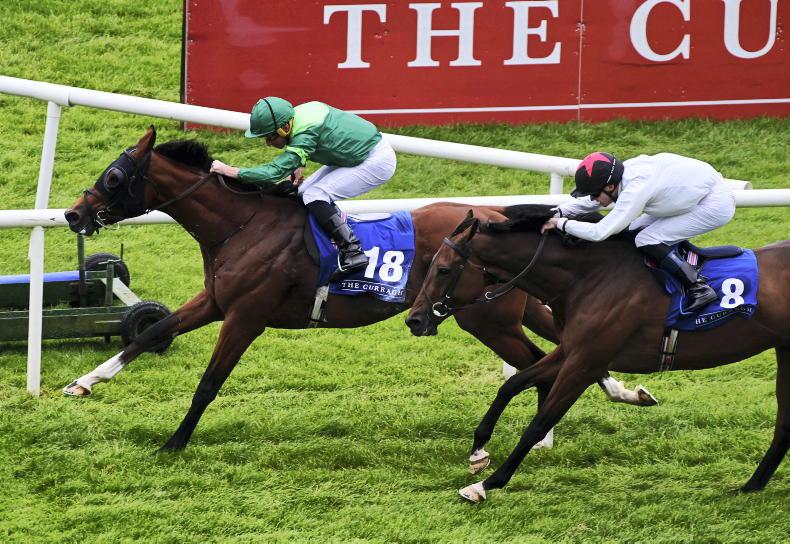THE racing authorities across Europe have agreed to reduce the weight allowance for three-year-olds in all-aged races over long distances on the flat. The 1lb reduction was agreed following a study of race results, which indicated that the classic generation had a strike-rate above expectations, when taking on their elders in races such as the Irish Cesarewitch and Prix Royal-Oak.
Three-year-olds have won two of the last three runnings of the Irish Cesarewitch, both Waterville (2022) and The Euphrates (2024) scoring by a narrow margin. The Euphrates was the only three-year-old in the 30-runner field and Waterville was one of just three of his age group in a similarly big line-up.
In France, six of the past 10 runnings of the Group 1 Prix Royal-Oak over two miles have been won by three-year-olds. Double Major was the only three-year-old in the 11-runner field, when he won the ParisLongchamp race in 2023.
Senior flat handicapper Garry O’Gorman said: “The weight-for-age changes agreed within Europe are fairly minimal in nature, affecting only races from 14 furlongs and upwards. The allowance three-year-olds receive in these races has been reduced by 1lb.
“So there is no change to the allowance over distances less than 14 furlongs and, in practice, there are not many important Irish races of note that will be impacted by the changes, apart from handicaps.
A three-year-old running in the Irish Cesarewitch this year will receive a 9lb (reduced from 10lb) allowance, while the allowance in the Irish St Leger will reduce from 9lb to 8lb. The allowance drops to 7lb for the second half of September.
British Horseracing Authority head of handicapping Dominic Gardiner-Hill carried out the research at the request of the European Pattern Committee. He found that changes made to the weight-for-age scale in 2017 “have had minimal impact on the overperformance of three-year-olds in British handicaps, particularly those at 13f+, whilst they also continue to regularly overperform in 10f-12f all-age handicaps.”
By comparing the number of wins achieved by three-year-olds with the number that would be expected by random chance, he found “whilst they overperform at various points at 10f+ in Ireland, the issue is not nearly as marked as it is Britain, whilst in Germany there is clear three-year-old overperformance in 12f+ handicaps run between the middle of August through to the middle of October.”
However, the data from Pattern and listed races run in Britain, Ireland, France, Germany and Italy during the same period tells a slightly different story, according to Gardiner-Hill.
“The metrics at all distance categories up to 13.49f are about as close to ideal as you are going to get, but once again highlight three-year-old overperformance in races run in the extended distance category (13.5f+). I, therefore, decided the only area which needed “tweaking” and bringing more into line this time around was the extended distance races.”
The handicappers also recommend a decrease of 1lb in the allowance received by two-year-olds in late-season sprints, most notably the Group 1 Prix de l’Abbaye at ParisLongchamp. The Platinum Queen was in receipt of an 19lb age allowance when she defeated her elders in the 2022 edition of the Abbaye. The allowance will be 18lb this year. However, the 24lb allowance for two-year-olds who contest the Nunthorpe Stakes at York in August remains unchanged.




 This is a subscriber-only article
This is a subscriber-only article
 It looks like you're browsing in private mode
It looks like you're browsing in private mode










SHARING OPTIONS: